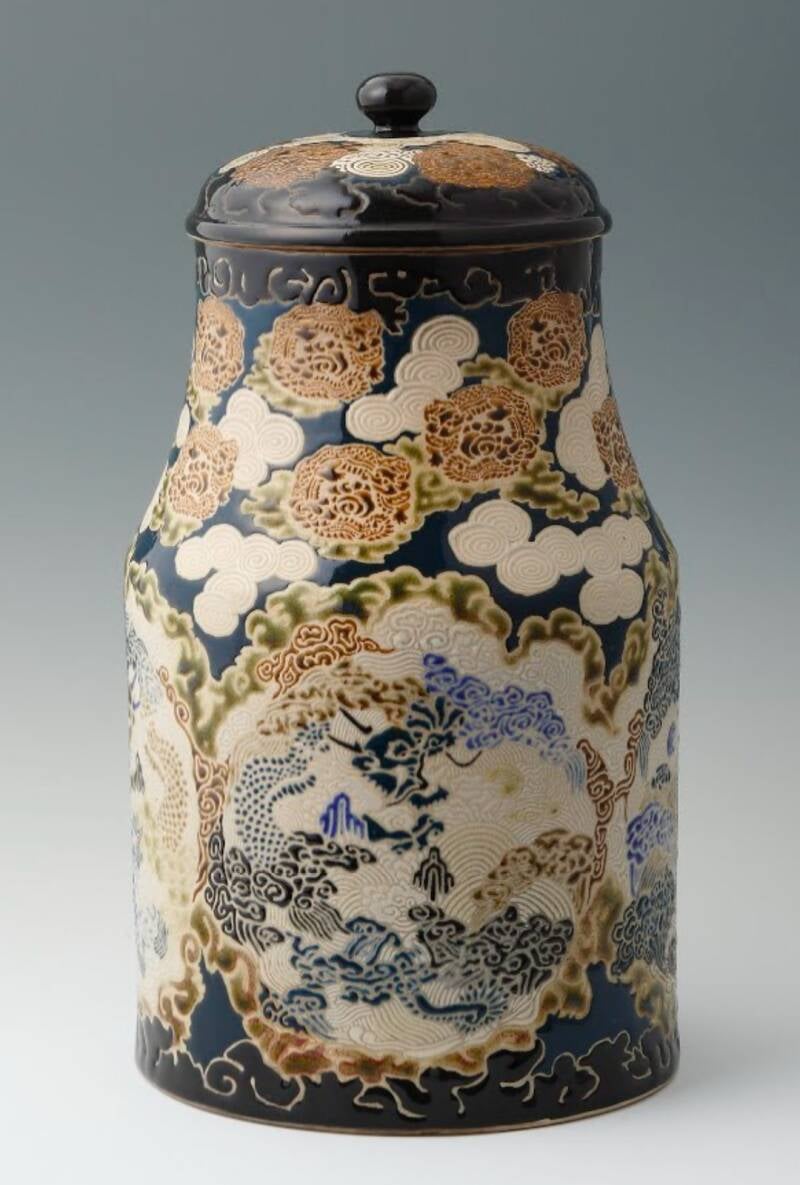24. Tanzan
TANZAN
丹山
Tanzan Seikai 丹山青海
Tanzan Rokuro 丹山 六郎
Tanzan Seikai, also known as Tanzan Yoshitaro, was born in 1813 in Kumano in the Tango disctrict, which today is the northern Kyoto prefecture. He initially studied medicine, but devoted himself in ceramic art and moved to Kyoto in 1833, where he became a pupil of Nakabayashi Chikuto (1776-1853) and opened a workshop in the Awataguchi district in 1851. His son Tanzan Rikuro or Rokuro (1852-97) was also a gifted ceramics artist and, together with his father, ensured the growth and fame of the Tanzan workshop during the Meiji period. The Tanzan workshop eventually became one of Awata's most celebrated suppliers of pottery. In particular they were famous for their 'pâte-sur- pâte' technique , a method of decoration in which the design is created in relief by applying with a brush several layers of liquid clay to an unfired and unglazed base. After a rough relief has been made in this way, the details are created by carving and scraping off the clay. Only then is the work fired, and the colours applied. It can take weeks to add extra layers and let them harden before the next one is applied. Tanzan Seikai, and later Tanzan Rikuro, played a prominent role in Kyoto and were counted among the most skilled of Japanese ceramists in their time.

A lidded jar with dragons by Tanzan Seikai
Tanzan Saikei invented a way to use bronze stencils to transfer design drawings to ceramics, which in 1856 led to a large order of thousands of pieces of tableware in western style. The order was made by a number of high-pitched samurai with the intention of transferring them to Edo and exporting them from there to Europe. The project came to an end because of the turbulent period in Kyoto during the last phase of the Edo period. It does indicate that Tanzan was one of the first ceramists to focus on western oriented export ware. He also played a prominent role after the installation of the Meiji government. For example, he was asked by the government to collaborate on the Toki Benkai, an overview of the ceramic production process in Kyoto with coloured illustrations and formulas for glazes.
His son, Tanzan Rokuro was already working in the Tanzan workshop and was asked by the German chemist Gottfried Wagener to study modern production methods in Europe with some other trainees. Among other things, they studied the technique of sludgecasting in Bohemia and the pâte-sur- pâte technique, which was first developed by the French Sevres company in 1850. It would later also be executed with great success by the Tanzan workshop. After their return, the Kangyoryo Seito Shiken Denshujo (Ceramic Laboratory and Training School, Institute for the Encouragement of Industry and Commerce) was founded in Tokyo in 1874. The main purpose of this centre was to teach new techniques of modem ceramic production.

By famous collector Captain F. Brinkley who traveled intensively through Japan in Meiji time, Tanzan's best pieces were praised "as delicate and elaborate as mediaeval illuminations". The work stands out because of an inlay of colour, with softly, dark tinted glazes, in contrast to the brighter glazes used by other ceramic artists from the Awata school.
Tanzan Seikai died in 1887, his son Rikuro died ten years later in 1897, ending the production of the Tanzan workshop. It is not known of the workshop continued the production under management of others.
Note that Tanzan Seikai is called Tanzan Yoshitaro by Captain F. Brinkley (in: “Japan - It’s History Arts and Literature”, Vol. 8). However, he is the only one. Gisela Jahn, Shinya Maezaki and experts from musea and auction houses call him Tanzan Seikai. We therefor assume that Seikai is the correct name.



Maak jouw eigen website met JouwWeb